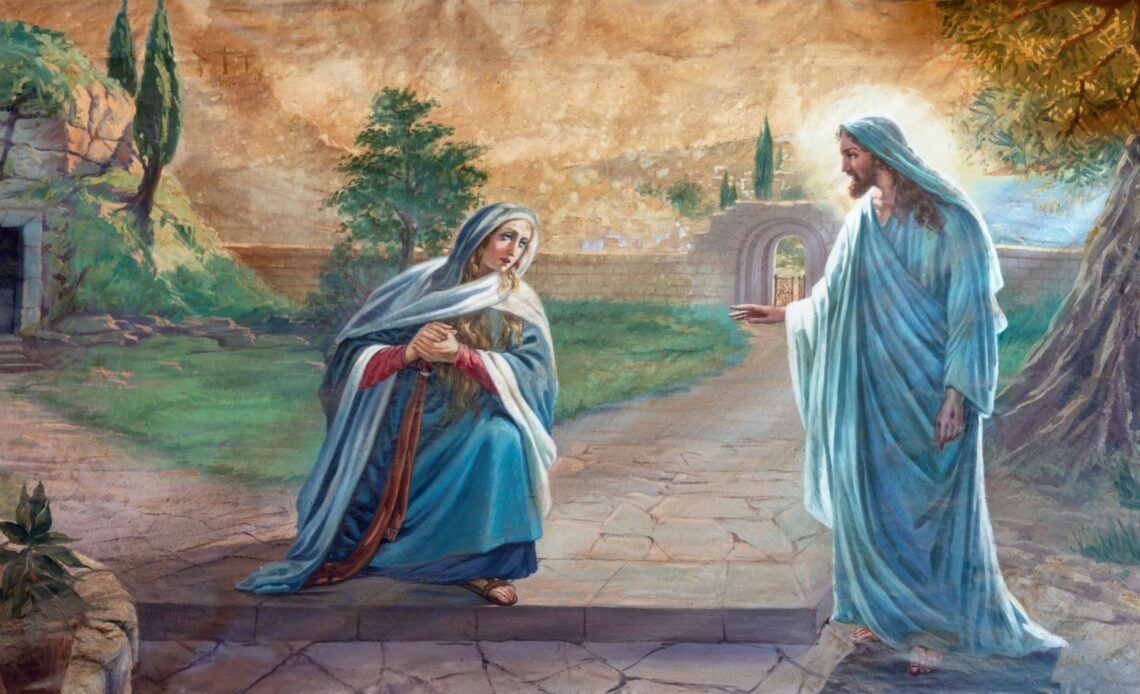“… he rose again the third day according to the scriptures: And that he was seen of Cephas, then of the twelve: After that, he was seen of above five hundred brethren at once; of whom the greater part remain unto the present, but some are fallen asleep. After that, he was seen of James; then of all the apostles. And last of all he was seen of me also, as one born out of due time” (KJV, 1 Cor. 15:4-7).
“he rose again the third day according to the scriptures”
The beginning of 1 Corinthians is foundational for Paul’s teaching concerning the resurrection of believers, which begins at 1 Corinthians 15:12. In 1 Corinthians 15:1-11, Paul, like a skilled master builder, gave many proofs for the resurrection.
First Corinthians 15:1-2 speaks of the church as evidence of the resurrection of Christ. Next, 1 Corinthians 1:3-4 speaks of the Scriptures as evidence of Christ’s resurrection. Jesus Christ died for the sins of man, according to the Scriptures. Later, He was buried. Thus, there is confirmation of His death.
Finally, He rose from the dead, which is the only possibility because He was dead, buried, and is now alive. But Paul states that Jesus’ resurrection was according to the Scriptures. Therefore the church and the Scriptures both give proof of the resurrection.
But what did Paul mean by the Scriptures? Paul likely referred to the Old Testament rather than what was written in the New. For instance, the Old Testament says, “For thou wilt not leave my soul in hell; neither wilt thou suffer thine Holy One to see corruption” (Ps. 16:10). Elsewhere the Old Testament states, “…when thou shalt make his soul an offering for sin, he shall see his seed, he shall prolong his days…” (Is. 53:10). However, it is possible that Paul had in mind the words of Jesus, for Jesus spoke of His resurrection after three days.
“And that he was seen of Cephas”
The third shred of evidence in support of the resurrection was the eyewitnesses. First, Paul introduces the reader to Peter. Jesus appeared to Peter. Peter was likely the first disciple to see the resurrected Christ. An indicator of this is the testimony of the two who saw Jesus on the road to Emmaus. They stated, “…The Lord is risen indeed, and hath appeared to Simon” (Luke 24:34). It would not be surprising for the Lord to reveal Himself to Peter first.
Jesus is full of compassion and grace. He knew that Peter had denied Him not long before. Thus, to show Himself to Peter would have aided in restoring Peter to his role as the chief of the disciples.
“then of the twelve”
After Jesus appeared to Peter, he appeared to the others. Scripture says, “Then the same day at evening, being the first day of the week, when the doors were shut where the disciples were assembled for fear of the Jews, came Jesus and stood in the midst, and saith unto them, Peace be unto you. And when he had so said, he shewed unto them his hands and side. Then the disciples were glad, when they saw the Lord” (John 20:19-20). The disciples were fearful after the death of Jesus. They feared the Jews and believed they might die much like their Savior.
Nevertheless, one glimpse of the risen Lord produced joy and gladness in their hearts. The resurrected Christ banished their fears, and the joy of the Lord was their strength.
“After that, he was seen of above five hundred brethren at once”
After appearing to the disciples, Jesus appeared to more than five hundred people. This appearance is astounding. Before Jesus appeared to the five hundred plus, many eyewitnesses would already have existed. Each added eyewitness would have only increased credibility for the statement, “Jesus has risen.” But now the statement was unshakably certain.
Jesus’ mass appearance is only recorded in 1 Corinthians 15. However, it was likely talked about for a long time before the book was written. For instance, 1 Corinthians 15:3 tells the reader that Paul delivered something he received. In other words, Paul was more of a middle man for what he says in 1 Corinthians 15:3-7. Instead, it is widely held that 1 Corinthians 15:3-7 is a creed of the early church.
Creeds were developed to be short and easy to memorize. They were packed with essential information and easily transferable from one person to another. It is believed that 1 Corinthians 15:3-7 was a creed that dates back almost to the cross itself.
As a result, many years before Paul wrote 1 Corinthians, the message of the resurrected Christ would have been accompanied by the many eyewitnesses, including the astounding five hundred plus.
“of whom the greater part remain unto the present”
The conclusion of the creed concerning the five hundred plus is that if someone needed proof for the resurrection, they were to go and ask one of them. This is the point in stating that many of them were still alive. Some people may have found it hard to believe the apostles. After all, they were strict followers of Jesus. Some may have wanted to ask someone that may have been a little more neutral not too long ago. Thus, they could ask one of the five hundred because many were still alive.
“but some are fallen asleep”
However, some of them, not most, had fallen asleep. In other words, they died. But their death did not constitute a lack of evidence, for they remained witnesses of the resurrection. When Peter wrote 2 Peter Paul had died. However, this did not hinder Peter from using Paul to support what he was saying. For instance, Peter said, “And account that the long-suffering of our Lord is salvation; even as our beloved brother Paul also according to the wisdom given unto him hath written unto you” (2 Pet. 3:15).
“After that, he was seen of James”
Next, Jesus appeared to James. Certainly, this James was not one of the disciples, for the disciples were already listed. Therefore, the James in question was the Lord’s brother. James was not a believer during Jesus’ earthly ministry. Instead, James was a skeptic. He probably thought Jesus was a little crazy.
However, Jesus appeared to James, and it radically changed his life. After Jesus’ resurrection appearance to James, James can be seen leading the church in Jerusalem in Acts 15.
“then of all the apostles”
Next, Jesus appeared to the other apostles. The use of the word apostle in the New Testament can be somewhat confusing at times. It is important to realize the word apostle is used in a strict and broad sense. There were many apostles, but only the twelve apostles, the eleven disciples plus Matthias and Paul, were specially commissioned by Christ.
For instance, James the Lord’s half-brother was an apostle. Paul said, “Then after three years I went up to Jerusalem to see Peter, and abode with him fifteen days. But other of the apostles saw I none, save James the Lord’s brother” (Gal. 1:18-19). James also headed up the recent statement in 1 Corinthians 15:7 of Jesus’ appearances before the transition of Jesus appearing to the apostles. Clearly, the disciples are not being stated again; rather, the list is being added to.
“And last of all he was seen of me also”
Finally, Paul tells of his own experience. Paul traveled on the Road to Damascus to extradite Christians to Jerusalem. However, Jesus appeared to Paul along the way, and Paul became a Christian. It is important to note that Paul said He was the last one that Jesus appeared to.
“as one born out of due time”
As a result, Paul was born out of due time. He witnessed Christ too late to be one of the twelve. However, by the grace of God, Paul was made an apostle. He states that he was the last apostle and the least of all.
Final prayer
Father, I thank You for the many appearances of Jesus. I am certain that He has risen from the dead. Thank You for Your Word and the confirmation You have given. In Jesus’ name, Amen.


